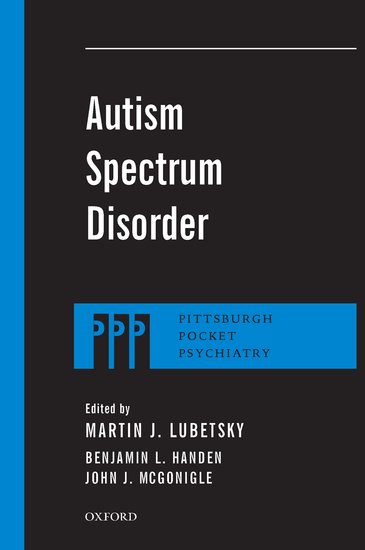By Martin J. Lubetsky, MD
People are finding autism in their families, pediatric offices, day cares, preschools, playgrounds, and classrooms. Individuals with autism are now portrayed in movies, television shows, news reports, and documentaries. The diagnosis of autism is being hotly debated in the media, academic medical centers, universities, autism centers, and advocacy agencies.
 Autism, or soon-to-be-called Autism Spectrum Disorder, is a developmental neurobiological disorder, characterized by severe and pervasive impairments in reciprocal social interaction skills and communication skills (verbal and nonverbal) and by restricted, repetitive, and stereotyped behavior, interests, and activities. The current DSM-IV-TR (Diagnostic and Statistical Manual of Mental Disorders-IV-TR, American Psychiatric Association) applies Pervasive Developmental Disorder (PDD) as the diagnostic umbrella, with five subtypes. With the upcoming proposed changes in DSM-5, the separate diagnostic classifications under PDD may be subsumed under one category Autism Spectrum Disorder (ASD). This puts autistic disorder, Asperger’s disorder, pervasive developmental disorder not otherwise specified, and childhood disintegrative disorder under ASD. The new proposed ASD diagnostic category would include specifiers for severity and verbal abilities, and also include associated features such as known genetic disorders, epilepsy, and intellectual disability. The new proposed ASD diagnostic category would also combine the current three domains (social, communication and behaviors) into two domains (social and communication deficits, and fixated interests and repetitive behaviors), based upon the belief that deficits in communication and social behaviors are inseparable. Much debate has been triggered by these proposed changes, especially regarding inclusion or exclusion of individuals currently diagnosed with autism, feared loss of school placement and funding, and the loss of identity of Asperger’s Disorder into the broader ASD.
Autism, or soon-to-be-called Autism Spectrum Disorder, is a developmental neurobiological disorder, characterized by severe and pervasive impairments in reciprocal social interaction skills and communication skills (verbal and nonverbal) and by restricted, repetitive, and stereotyped behavior, interests, and activities. The current DSM-IV-TR (Diagnostic and Statistical Manual of Mental Disorders-IV-TR, American Psychiatric Association) applies Pervasive Developmental Disorder (PDD) as the diagnostic umbrella, with five subtypes. With the upcoming proposed changes in DSM-5, the separate diagnostic classifications under PDD may be subsumed under one category Autism Spectrum Disorder (ASD). This puts autistic disorder, Asperger’s disorder, pervasive developmental disorder not otherwise specified, and childhood disintegrative disorder under ASD. The new proposed ASD diagnostic category would include specifiers for severity and verbal abilities, and also include associated features such as known genetic disorders, epilepsy, and intellectual disability. The new proposed ASD diagnostic category would also combine the current three domains (social, communication and behaviors) into two domains (social and communication deficits, and fixated interests and repetitive behaviors), based upon the belief that deficits in communication and social behaviors are inseparable. Much debate has been triggered by these proposed changes, especially regarding inclusion or exclusion of individuals currently diagnosed with autism, feared loss of school placement and funding, and the loss of identity of Asperger’s Disorder into the broader ASD.
Reports from the Centers for Disease Control (CDC) show an increase in prevalence of children identified with autism, emphasizing the need to sharpen the focus on early identification and improve accurate diagnostic assessment and evidence-based interventions, which will result in more successful outcomes. In addition, long-range planning and support throughout the developmental years and into adulthood is critical.
There has been considerable emphasis in recent years on the use of evidence-based practices in most fields, and especially in autism interventions. Interventionists represent many disciplines including education, psychology, psychiatry, pediatrics, neurology, speech and language, occupational therapy, and others. The National Research Council reported that services should include a minimum of 25 hours a week, 12 months a year, in which the child with autism is engaged in systematically planned, developmentally appropriate activity aimed toward identified objectives determined on an individual basis. Intervention should start early and continue through childhood, adolescence, and adulthood.
There is a strong push to develop and increase essential services for adults with autism after the school years (usually after age 21). Transition planning should begin by age 14 to maximize success. The transition process uncovers, develops, and documents the skills, challenges, goals, and tasks that will be important for a person with autism to promote movement from childhood supports to adult services. This can range from vocational training to supported employment to college preparatory, and many other possibilities. The development of social competency and independence skills are critical to success and an enhanced quality of life.
Martin J. Lubetsky, MD is Associate Professor of Psychiatry at the University of Pittsburgh School of Medicine, and the Chief of Child and Adolescent Psychiatry Services and Center for Autism and Developmental Disorders at Western Psychiatric Institute and Clinic of UPMC, and Chief of Behavioral Health at Children’s Hospital of Pittsburgh of UPMC. Dr. Lubetsky is a past recipient of the Grandin Award from the Advisory Board On Autism and Related Disorders (ABOARD). He is co-editor and co-author of Autism Spectrum Disorder.
Subscribe to the OUPblog via email or RSS.
Subscribe to only psychology articles on the OUPblog via email or RSS.
View more about this book on the ![]()
![]()




Funding has been massively cut already during the past few years. However when this regrouping takes place a lot of children with special needs will lose their placements in public schools etc. This could be a devastating blow to the special needs community.
Thank you for the update on what’s trending in autism!
The book is a very valuable resource.